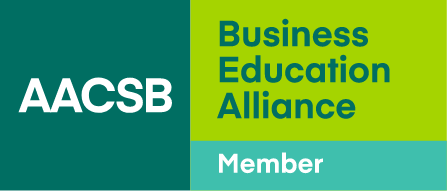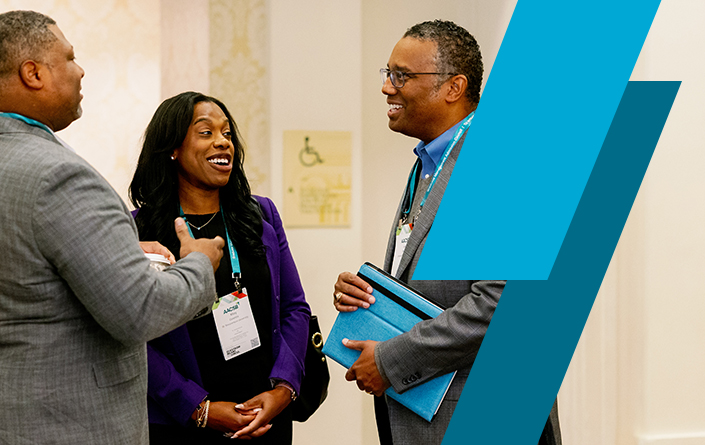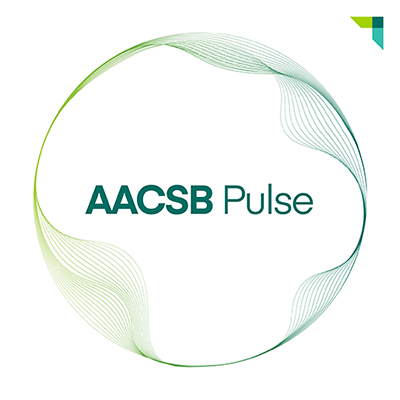Open Access and the Role of the University
- Recent global disasters have shown how critical it is for scholars to quickly disseminate research to policymakers and the general public.
- While much research is available through open access models, publishers and institutions must determine how to expand and fund these models.
- A few major publishers currently dominate the field, but academic presses also have important roles to play.
The summer of 2022 was the sixth hottest in the global climate record. It came amid other weather-related disasters around the world, from drought to flooding, that will cost an estimated 20 billion USD. And it occurred while society was still dealing with the effects of the COVID-19 pandemic, which has caused more than 6 million deaths globally.
Our deteriorating climate and the COVID-19 pandemic have thrown into sharp relief how vitally important it is for scholars, scientists, policymakers, and the general public to have access to credible research. Governments, institutions, and publishers are all considering ways to accelerate the pace at which we disseminate scholarship and communicate research advances related to pressing global issues.
As a direct result of the pandemic, for example, we saw explosive growth in pre-print publication in the biomedical sciences. Researchers investigating the coronavirus from all angles rushed to get their findings out into the world without waiting for the journal publishing process to run its typical monthslong course.
In the U.S., new policies relating to open access (OA) scholarship are poised to dramatically change the way research is disseminated. On August 25th, the White House Office of Science and Technology Policy issued a long-anticipated memorandum titled “Ensuring Free, Immediate, and Equitable Access to Federally Funded Research.” In a nutshell, the new directive requires all grant-awarding federal agencies to make OA publication a condition for scholars to receive public funding. All 20-plus agencies must begin to comply with the directive in 2026.
How will the new federal policy affect the OA landscape?
Three Major Shifts
As the head of the MIT Press at the Massachusetts Institute of Technology in Cambridge, I have a specific perspective on OA publishing. I look to balance the priorities of running a business with the mission of expanding access to knowledge wherever and however possible. I anticipate momentous developments due to three provisions of the new directive.
First, the policy specifies immediate unfettered access to publicly funded research. This is a significant change from earlier policies, which gave publishers a 12-month embargo period, meaning research funded by federal dollars could be paywalled by journals for up to one year.
Next, while earlier directives were science-focused, the new policy covers all federal funding agencies. These include the National Endowment for the Arts, the National Endowment for the Humanities, the Department of Education, and more. This means federal grants awarded to scholars across the academic spectrum carry the same immediate public access requirement. Journals in the arts, humanities, and social sciences—which have been slower than journals in the sciences to adopt compliant models—will have to find their OA footing quickly.
Finally, the new directive requires the agencies to incorporate provisions for associated research data into their public access plans. The data provision represents a significant step toward protecting our nation’s research and development competitiveness. Currently, compared to other countries with high levels of research spending, the U.S. lags in federal support and infrastructure for data. Publishers of peer-reviewed research have an important role to play here because they will need to make sure the articles they publish link directly to relevant empirical results.
The broader objectives are to democratize access to information, accelerate discovery, grow trust in the academy, elevate truth, and empower knowledge to have the greatest possible impact on our world.
Let’s pause to celebrate this policy milestone. After a long and arduous climb, we can now glimpse the summit of free access to all publicly funded research. But what lies over the mountain? The broader objectives here are to democratize access to information, accelerate discovery, grow trust in the academy, elevate truth, and empower knowledge to have the greatest possible impact on our world. However, there appear to be many more peaks to scale.
Two Primary Models
As an academic publisher, I am acutely aware of playing merely a supporting role to the focal priorities of research and teaching. After all, university presses exist to serve the scholarly community. But they are operating within increasingly precarious financial parameters, and occasionally—well, with growing frequency—they feel compelled to declaim the value they provide. Academic presses are intended to safeguard the diffusion of knowledge from market forces. That is, they support the publication of vital knowledge that might be too narrow or obscure to be published by commercial outlets that need to make a return on their investment.
If we agree that sharing knowledge for the greater good requires dissemination mechanisms that aren’t dominated by profit-driven interests, then we must wonder whether the new U.S. policy will ultimately strengthen or weaken commercial control of the academic publishing sector.
But other pivotal issues must be addressed. We must determine what financial models will sustain public access to research over the long term. We must determine the role of the higher ed sector in championing and funding OA, and we must identify the downstream ripple effects of making research content and data openly available for uses beyond sharing knowledge. Most important, we must take steps now to avoid unintended consequences in the future.
Open access to peer-reviewed scholarship is typically achieved in one of two ways: through deposit of an accepted, peer-reviewed paper in an open institutional or subject repository (so-called “green OA”), or through pay-to-publish models (“gold OA”). With the green OA approach, because the research is available for free elsewhere, journals can continue charging for subscriptions and keep final published articles behind paywalls. In the various gold OA models, which many journals already use, content is free to subscribers, but there is an article-by-article publication fee that is paid by the authors, their funders, or their institutions, assuming such resources are available. These fees are known as article processing charges, or APCs.
Most journals have adopted a hybrid model in which some articles are published OA and some are not, though the paywalled articles can achieve OA compliance through the green deposit method. This system is likely to be in place for the foreseeable future.
In addition, a small but growing number of journals have enough direct subsidy to enable open publication without requiring APCs. Because the federal policy provides agencies and authors with ample leeway in how OA is achieved, it’s reasonable to assume that publishers will use multiple models and mixed sources of funding to comply with new OA requirements.
A Look at Funding
A key consideration with OA publishing is how to pay for it. Currently, some grants directly support publication in paid OA journals, and we can hope that the federal government and philanthropic organizations will increase their funding in response to the policy change. This money will help create and maintain the repositories of research content (both text and data), and it will support related infrastructure such as discovery services. Ideally, we also will see increased funding that will allow publishers to experiment with new OA models, as well as bridge funding that will mitigate the financial risk of transitioning established journals away from the traditional subscription model.
Many research libraries already engage in read-and-publish deals with larger publishers, and now more are likely to do so. In this model, the institutional subscription covers the costs both for reading the journal content and publishing the outputs of authors at that institution. The model is viewed as “transformative” because the subscription model remains in place while more content is published OA over time, allowing libraries to gradually shift their budgets—and more of their content—from subscription to OA funding. These arrangements typically cost institutions more than traditional bundled subscription licenses, at least until all-open publishing can emerge. At the same time, library budgets have been shrinking, not growing.
Hence, the model has been widely criticized for reinforcing inequities in authorship. First, such deals lock in more of the library’s limited budget, giving the advantage to commercial publishers and large societies over smaller, more mission-driven publishers. Second, this model disadvantages scholars who wish to publish, but who work independently, or at less well-resourced institutions, or in less wealthy parts of the world. At the same time, this model creates an incentive for researchers to choose to publish in paid-OA journals that their libraries subsidize over those their libraries do not subsidize. These non-subsidized outlets include most journals produced by scholarly societies and university presses.
Read-and-publish deals lock in more of the library’s limited budget, giving the advantage to commercial publishers and large societies over smaller, more mission-driven publishers.
A preferable and growing model is “subscribe to open,” or S2O. Using S2O, a traditional journal can offer its subscribers continued access while adding new paying partners who are inclined to support OA. If the journal reaches a threshold level of subscription dollars within a specified period, the publisher makes all the articles issued that year fully OA. In effect, a subset of institutions funds open publication for the rest of the community. These models are not entirely altruistic, however. Additional incentives are built in, such as access to backlist content, to ensure that institutions with means keep subscribing.
At the MIT Press, we have begun using a similar model to transition our digital scholarly monographs to OA. Undertaking the risks of doing so required generous philanthropic support from a private funder. To date, 240 libraries around the world have signed on, covering the majority of our costs for making all MIT Press academic titles published this year OA.
The Role of the Academy
Open knowledge is important as a public good, but it’s also a strategic imperative within academia, with ramifications that extend throughout higher education. Faculty promotions, funding, research impact, and even university rankings depend on publication records and associated data and metrics. Therefore, we need to answer two key questions: What are the academy’s roles and responsibilities in supporting compliance with the new federal policy? And how should the academy invest in open scholarship more generally?
At the moment, library budgets determine how much universities contribute to OA and how much librarians can leverage their already limited resources in support of this model. According to data from the Association of Research Libraries, library expenditures as a percent of university expenditures have been gradually decreasing for decades. In 2017, they were hovering at just about 1.5 percent. Libraries are likely to find their budgets are insufficient to pay for the changes required to comply with the new mandate.
There is another point to consider. Consolidation in scholarly publishing has had the effect of creating a handful of large publishers who produce more than 50 percent of all research articles and for whom paid-OA is already a profitable business model. The largest publishing companies offer universities services and technologies that underpin key academic functions, such as tracking research activities and evaluating people and programs. These tools become more powerful as more content and data are openly available for scholars to mine. For these reasons, most institutions and philanthropic organizations spend most of their OA dollars with large publishers.
But that flow of funds has second- and third-order consequences. When most scholarly publishing lies in the hands of a few profit-driven enterprises, these publishers set prices, monopolize library budgets, and shift resources away from the books that humanists and social scientists depend on.
Federal policy may be agnostic on the question of where researchers publish their work, but university policy need not and should not be. Now is the time for academic leaders to figure out how to avoid relinquishing further strategic control and money to a small group of commercial enterprises. One way to do this is to allocate some of their OA budgets to smaller presses.
Additional Considerations
As U.S. institutions begin complying with the new federal directive, we will find many other questions to deliberate. When and under what conditions should open research content be shared with licenses that prevent commercial re-use? As we engage in commercial partnerships that involve academic data and analytics, how can we protect the privacy of individuals within our community? Are there investments we can make now to promote and sustain a healthy level of competition and distributed innovation within research communications?
But the most crucial questions might be these: How can we allocate our limited resources so they align with academic values that go beyond open access? How do we nurture a diversity of global voices and research fields? How do we promote fairness, equity, and transparency in how we assess excellence in knowledge production? How do we maintain integrity in research methods and communications and translate research advances for maximal policy impact?
In short, how do we guarantee academic freedom itself?
Photo of the author by Diana Levine.






